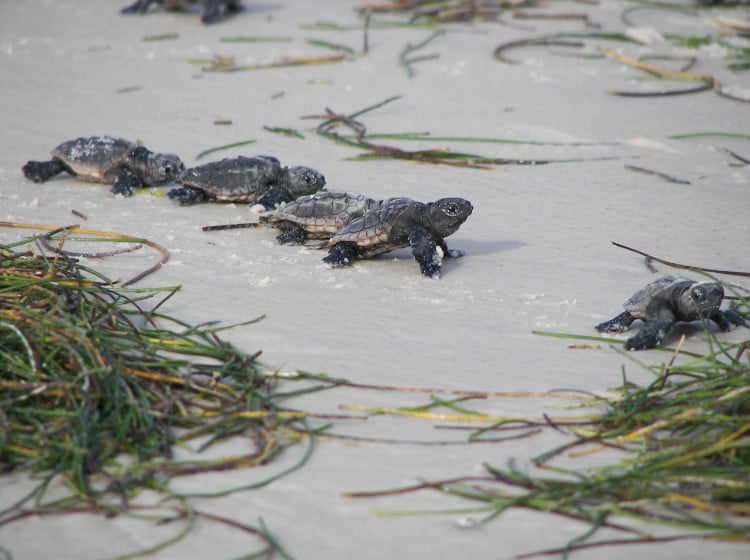It’s Time to “Shellabrate”: Sea Turtle Nesting Season is Here!
By Forgotten Coast Web Team | May 11, 2023

This is an exciting time of year for the Forgotten Coast, and an extremely important season for Florida marine life. May has arrived, and that marks the beginning of sea turtle nesting season!
Between May and September, female sea turtles will come ashore at night to lay eggs on Franklin County’s beaches, including St. George Island and Alligator Point—as well as other beaches across the Sunshine State. About 45 to 60 days later, up to 150 baby turtles can hatch from each nest! One female sea turtle may nest several times in a season.
Keep reading to learn more about this spectacular season and how organizations across Franklin County are working hard to keep sea turtles safe.
Protecting the Earth’s Oldest Creatures
Sea turtles are among the oldest creatures in the world! For than 110 million years the species has thrived despite a host of natural predators that prey on sea turtle eggs and hatchlings. Unfortunately, in modern times, humans pose the greatest threat to these majestic reptiles.
Like many sea turtle nesting areas across the nation, Franklin County is working to reverse this disturbing trend and protect our area’s sea turtle nests. Six local organizations—a combination of volunteer groups and state and national agencies—are tapping into community and visitor education, habitat and nesting research, and nest identification and monitoring to ensure sea turtles continue to survive and thrive.
Leave No Trace
In an effort to keep our beaches clean and protect sea turtles, Franklin County follows a “Leave No Trace Ordinance.” This ordinance requires residents and visitors to remove chairs, umbrellas, floats, jet skis, coolers, canopies, volleyball nets, fishing gears and any other items from the beach each night. This allows mama turtles to more easily navigate onto the beaches and lay their eggs in the dunes. It also ensures sea turtle babies have a clear path back to the water after they hatch.
Lights Out
This time of year, it’s also important to turn off all outdoor lights at night as the glare discourages females from nesting and disorients hatchlings. As a new hatchling makes its way to the water (their only safe haven), their only guide is the light horizon where the sky meets the sea. For millions of years this natural process was undisturbed—but that has changed. Today, hotels, homes and rental properties are scattered across Florida’s beaches, often shining lights at night. These lights can confuse new hatchlings and lead them in the wrong direction, which means they probably will not survive.
In 1998, Franklin County passed a lighting ordinance for marine turtle protection to aid in the protection of sea turtles. This is why it’s critical to turn out your lights and draw the shades at night if you’re staying in a beach property. Also, do no use flashlights or camera flashes on the beach during the nesting season.
Current research indicates that only one sea turtle hatchling in every 5,000 reaches adulthood. In Franklin County, we are working to increase these odds! We ask our residents and visitors to help us in our efforts to save the sea turtles.
Learn More!
Want to learn more? Visit the St. George Island Visitor’s Center (at the St. George Island Lighthouse Park) to find more information about sea turtle nesting.


